The Bounce: An Australian Rules Footy Game Retrospective
Everything you need to know about video footy history
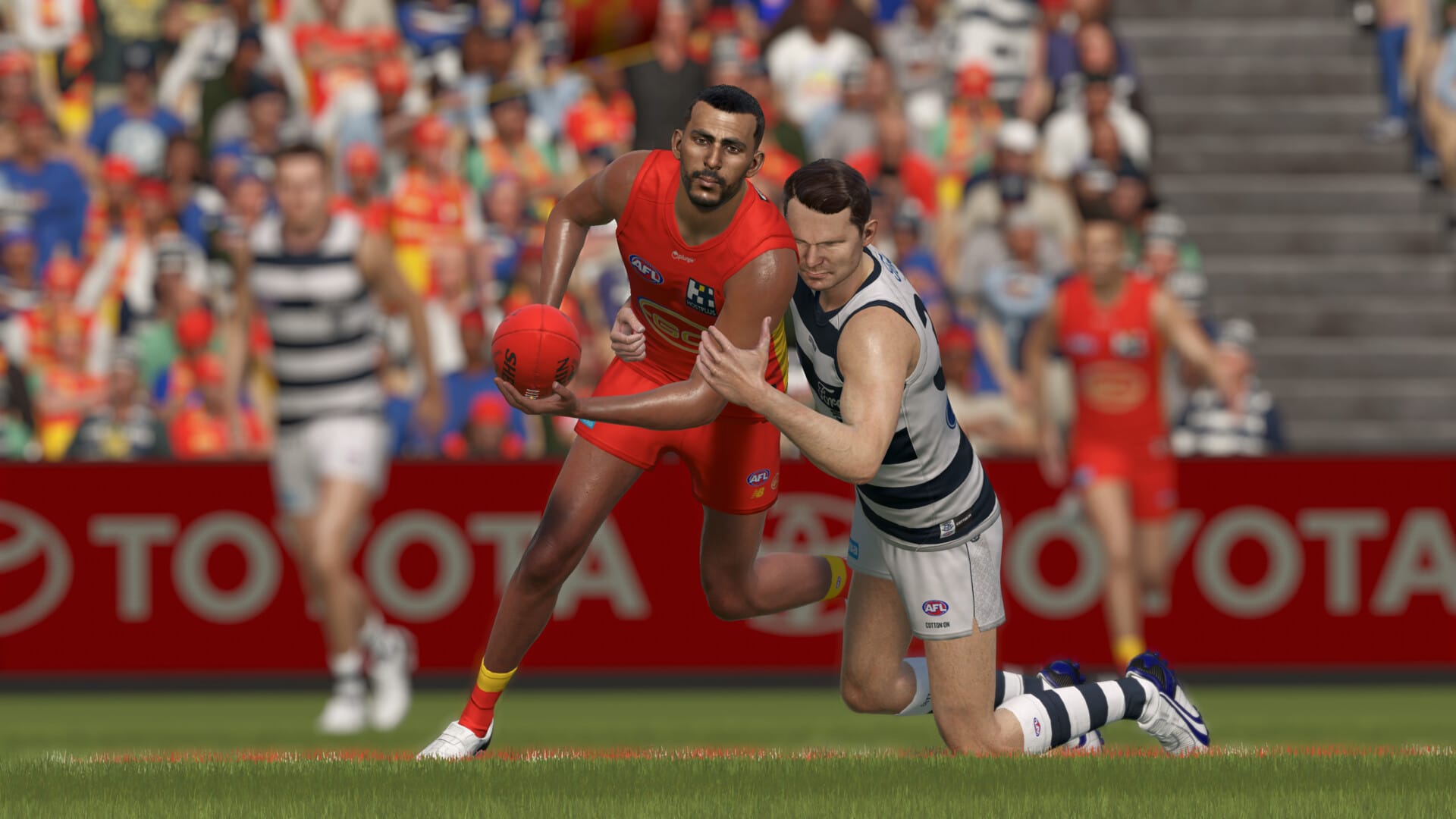
Whenever I speak to someone visiting Australia from overseas, there's one activity I always recommend without hesitation: get down to Melbourne, and as long as it's between March and September, get yourself tickets to an Australian Football League (AFL) game. I'm not a particularly "sporty" person; I've got the coordination of a drunk octopus, and I'm generally not a big watcher of sports either. But, like many other Australians (particularly those from the southern states), "footy" is more than a sport, it's a thoroughly ingrained part of our cultural identity.
What is AFL?
The first ever game of Australian rules football was played on 15 June 1858 in Melbourne, Australia. It was a match between Melbourne Grammar School and Scotch College. Though the true origins of footy are mysterious, the game's creator is generally credited as Tim Wills, who was born in the New South Wales countryside near the modern-day Australian capital of Canberra. Wills was sent to England in 1850 by his father to attend the prestigious Rugby School, where the sport of Rugby had been born in 1845. Wills earned a reputation for his athletic prowess and love of sport, and upon his return to Australia in 1856, he became involved in local social sporting clubs. There were a number of nascent football-type games with varied rules played in Melbourne at the time, and by 1858, Wills, likely influenced by some of these games, began to codify the rules of what would eventually become Australian rules football.
The "speccie" is the most spectacular (hence the name) display of athleticism in AFL - when a player climbs or leaps up another's back in order to "mark" the ball, earning a free kick. Source: YouTube.
Over the following years, the sport built a devoted following in the city of Melbourne. It spread to South Australia almost immediately, and eventually to the other colonies - Tasmania, Western Australia, New South Wales, and Queensland. By the 1870s, the rules had developed a degree of consistency, and the game had become a huge part of Australian culture. Crowds in these early days regularly numbered between two and three thousand, with many games attracting 10,000 or more spectators, at the time making it one of the largest sporting events by attendance globally. Though the game was initially favoured in the colonies of New South Wales and Queensland, Australian rules footy eventually gave way to rugby - a divide that persists to this day. The geographic divide between rugby and Australian rules football is known as the "Barassi Line", with rugby being the predominant football code in the northeast, and Australian rules football being dominant in the south, west, and north-west.

It's hard to understate the cultural significance of Australian rules footy. Since the mid-1990s, attendance at games has consistently sat between 30-40 thousand spectators, with that number jumping to 65-75 thousand during the finals season in late August and September. By attendance numbers alone, AFL is one of the largest sports in the world - impressive considering that the sport is barely known outside its small nation of 26 million people. Footy is a defining element in the culture of cities like Melbourne and Adelaide and has long acted as an avenue of assimilation for each wave of immigration. Many clubs maintain deep and enduring ties with ethnic groups in Australia, such as the long association of Carlton Football Club with Italian migrants in Melbourne, or the Western Bulldogs' ties with the Vietnamese community.
The birth of footy games
AFL has a rich history in Melbourne, and it is impossible to go more than a day without hearing some sort of heated debate about the weekend game. And while not as old as footy, video game game development too has deep roots in Melbourne. Most notable of the developers is Beam Software / Melbourne House, a prominent studio throughout the 1980s and 1990s, producing games like The Hobbit (1982), Double Dragon (1987), MechWarrior (1993), Bug! (1995), Gex (1995), and KKND: Krush, Kill n Destroy (1997).
Surprisingly, it wasn't a Melbourne developer that produced the first AFL game - rather, it was the creation of UK developer Clockwize and UK publisher Again Again. Australian Rules Football was released for the Commodore 64, Sinclair ZX Spectrum, and Amstrad CPC in 1989. At the time, the "Australian Football League" hadn't been established - the national contest was still under the banner of the Victorian Football League (VFL), even though it welcomed teams from other states. So Clockwize's game wasn't technically an "AFL" game.
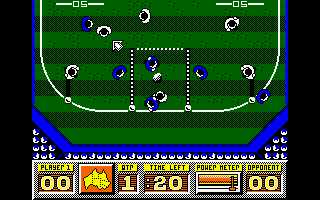
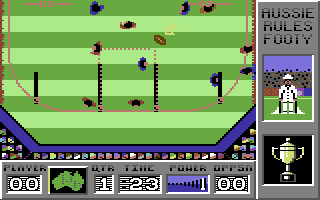
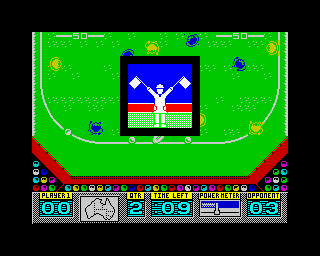
Australian Rules Football on the Amstrad CPC (left), Commodore 64 (centre) and Sinclair ZX Spectrum (right). Source: MobyGames.
In a somewhat entertaining review from Your Sinclair magazine in 1990, reviewer Rich stated:
"Australian Rules Footie is supposedly the most violent 'sport' around - probably because there aren't actually any rules."
Rich wasn't far off either - AFL has traditionally been regarded as a fairly rough sport, though like many contact sports, concerns in recent years about Chronic Traumatic Encephalopathy (CTE) have driven rule changes aimed at reducing injuries. And while the statement that footy is a lawless game is a bit of a misrepresentation, the comment does highlight a challenge that AFL games continue to face to this day - the somewhat dynamic and subjective nature of the rules.
Like in other sports, the referee (known as an umpire in AFL) is the arbiter of fair play. However, the fast-paced and dynamic nature of play, unpredictable movement of the ball, physical contact between players, and the fact that there are 36 players on the field at a given time creates a chaotic environment where umpires are frequently required to exercise their judgement. Modern technology has started to erode the singular reliance on the umpire (with assisted decision review technology), but many fans of AFL regard the unpredictability as one of the great hallmarks of the game. That doesn't make a programmer's life any easier though.
The birth of the AFL
In 1990, the VFL renamed itself to more accurately reflect the national reach of the game, and footy games soon followed suit. Melbourne studio Beam Software released the first game under the new league name in 1991, Aussie Rules Footy, on the Nintendo Entertainment System. The game was one of only two titles for the NES released exclusively in Australia (the other being International Cricket), but it was well received, and still comes up in AFL social media feeds.
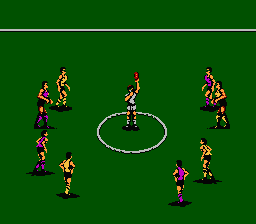
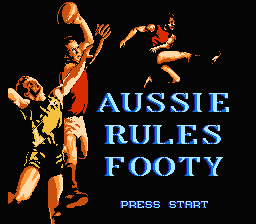
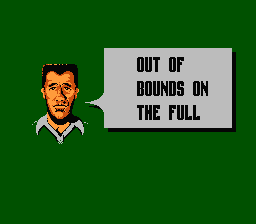
Source: MobyGames.
A five-year hiatus followed the release of Aussie Rules Footy. Though the reception to Beam Software's AFL title was positive, the financial numbers might not have looked good enough for Mattel to invest in a follow-up for the SNES. But in 1996, footy re-emerged on the gaming scene bigger than ever with AFL Finals Fever, from Blue Tongue Entertainment.

AFL Finals Fever was my first exposure to an AFL game. This time, all 16 AFL teams were there in their full glory, along with up-to-date player and coach rosters, photos, team songs, and official AFL branding all over the product. Unfortunately, as professional as this game looked, the gameplay was a little lacking, as was the performance. Despite having stats for all the players, all the character sprites on the ground looked identical, so picking a player to kick to was an exercise in luck rather than strategy.
The EA Sports era
Sports gaming in the late '90s was a fairly common story: Electronics Arts' EA Sports division gobbled up sporting codes worldwide and released titles that, at least at the time, had a reputation for being polished, approachable, and enjoyable. AFL was no different, and in 1998, EA Sports published AFL 98, from developer Creative Assembly (who would eventually achieve widespread recognition for their Total War series).

Like AFL Finals Fever, AFL 98 was an officially licensed AFL product, and also like Finals Fever, was only available for Windows. Sports games are typically best enjoyed on the couch with a few friends, so the decision to once again release only for PC was rather limiting, but it was soon rectified a year later with AFL 99.
AFL 98 and 99 were the dawn of a "golden era" for AFL games; the production value was better than ever before thanks to the high product standard associated with EA Sports. The switch to 3D graphics was also a boon, with the 2D graphics of previous generations inherently limiting to a game with a significant vertical element. AFL 98 gameplay was positively received, and many criticisms were addressed in the 1999 follow-up. Most importantly though, this is when AFL games began to earn a true stamp of authenticity, with up-to-date player lists, and audio commentary from famous Australian broadcaster Bruce McAvaney and retired football legend Leigh Matthews.

The IR Gurus era
For whatever reason, AFL 99 was the last footy game from EA Sports. The next generation of games would be created by sports game developer IR Gurus, starting with the management sim, Kevin Sheedy's AFL Coach 2002 for Windows. "Forgettable" would be an understatement for this game - outside of a few forum posts and a listing in Wikipedia, there seems to be little evidence this game ever existed. Was it any good? I can't honestly say, because outside of a few abandonware sites, it's difficult to track this one down, and even when you do, good luck running it on modern hardware.
However, it wasn't Kevin Sheedy's AFL Coach 2002 that gave the IR Gurus era its reputation as one of footy gaming's great highlights - it was their AFL Live/Premiership series. Starting in 2002, IR Gurus released AFL Live 2003, followed by AFL Live 2004, AFL Live: Premiership Edition, AFL Premiership 2005, AFL Premiership 2006 and finally AFL Premiership 2007. The IR Gurus games were the first truly multi-platform AFL games, with most being released on PC, PlayStation 2, and Xbox. The graphics were (for the time) spectacular, the production value was high, but most importantly the gameplay was solid. AFL Live 2004 in particular is regarded among many fans as the best AFL game ever made, and the addition of Aussie band Grinspoon's "Lost Control" as the theme song added a truly authentic sense of modern Australiana to the experience.
Absolute banger. Source: YouTube.
The games in this era were sitting in a sweet spot. Gameplay was approachable and engaging, but not overly complex. Visual fidelity was detailed enough to communicate all the aspects of the game - tackles, height, and distance. Finally, after 15 years of footy games, IR Gurus had nailed the formula, and all they had to do was tweak it.
And that's mostly all they did, to the chagrin of reviewers. AFL Premiership Edition (essential AFL Live 2004 with updated player lists for the 2004 season) was criticised for making very few changes to the gameplay for the asking price. IR Gurus apparently responded to this with AFL Premiership 2005, but the result was derided as a buggy, poorly produced mess. AFL Premiership 2006 jumped up in the review scores again, yet it is barely mentioned by fans today. Then, AFL Premiership 2007 looked to capitalise on this success with the "don't fix what isn't broken" approach - and, like AFL Premiership Edition, IR Gurus were once again criticised for not changing enough.

The latter half of the IR Gurus custodianship of the AFL licence was marked with off-field drama. Publisher Acclaim Entertainment was facing bankruptcy in 2004, disrupting the release of Premiership 2005 and complicating distribution, which was split between THQ and Sony. Sony Computer Entertainment took over as publisher from then on, with Premiership 2006 and 2007 being PlayStation 2 exclusives, without a nod at the seventh generation Xbox 360 and PlayStation 3.
The modern era
As AFL games entered the seventh generation era with the Xbox 360 and PlayStation 3, they fell into a fairly predictable pattern - passable gameplay and middling review scores. From here on, AFL video games would be (mostly) developed by one of two Melbourne-based studios - Wicked Witch Software and Big Ant Studios. Wicked Witch kicked things off with AFL Challenge for the PlayStation Portable in 2009, as well as the rather bizarre Nintendo DS title AFL Mascot Manor, a 3D platformer adventure that seemed to be aimed at younger players.
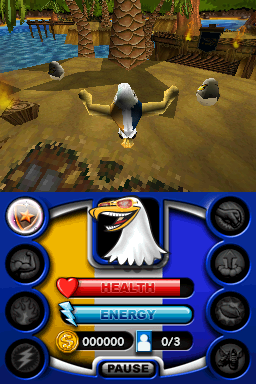
This is where things get confusing. In 2011 Big Ant Studios released AFL Live for Xbox 360 and PlayStation 3 and Wicked Witch released AFL for the Nintendo Wii. In 2012, Wicked Witch followed up with AFL: Game of the Year Edition, which featured an updated roster of players for the 2012 season, and AFL: Gold Edition, a mobile port for iOS. Also in 2012, Big Ant Studios released AFL Live: Game of the Year Edition. 2013 saw the release of AFL Live 2 for PC, Xbox 360, and PlayStation 3 - by Big Ant Studios, right? Nope. AFL Live 2 was made by Wicked Witch Software. Only the sports genre could produce this sort of licensing shenanigans.
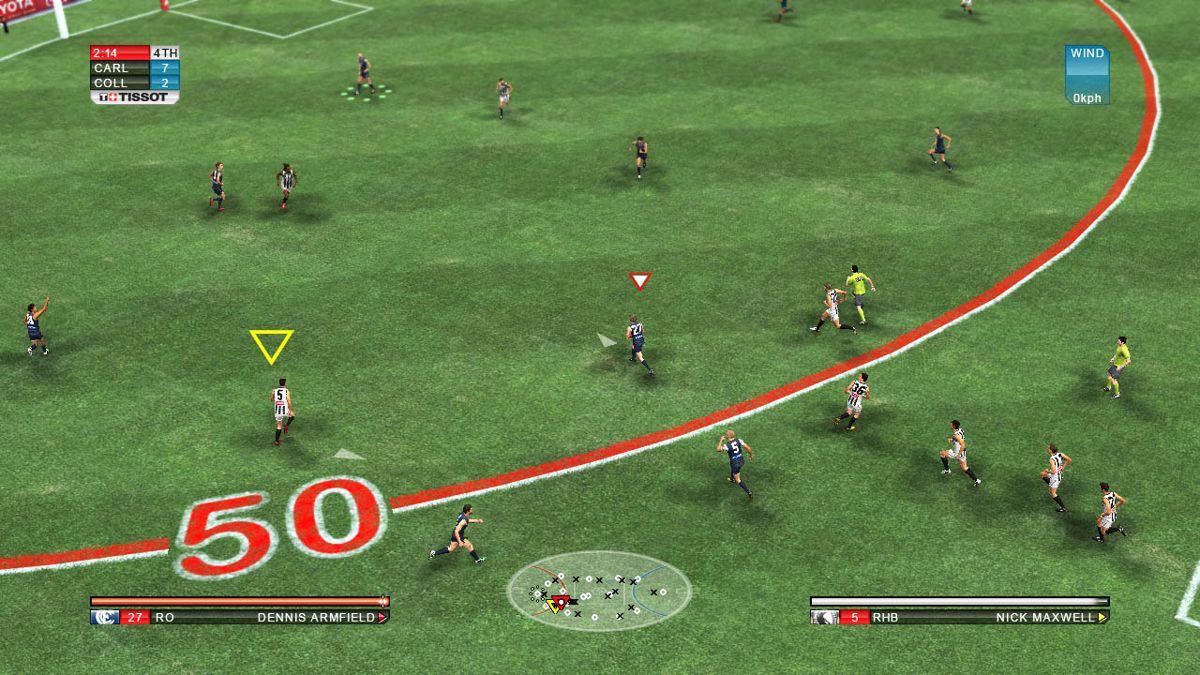
I should also note here that the 2010 - 2020 period saw no less than four obscure and unofficial football management sims for PC released - Premiership Coach 2010 and 2011 from Southern Cross Studios, and Australian Football Coach 2014 and 2020 by Statto Software.
This highly congested and muddled mess of releases was followed by an extended hiatus until the next console generation, when Wicked Witch Software released AFL Evolution (2017) for PlayStation 4, Xbox One and PC. Another three-year hiatus followed before Wicked Witch released AFL Evolution 2 in 2020, this time adding the Nintendo Switch to the supported platforms. On the management front, Statto Software has continued to plug away with Australian Football Coach 2023-24, and finally in May 2023, Big Ant Studios returned with AFL 23, an unfortunately buggy mess on release, but now vastly improved thanks to post-release support.
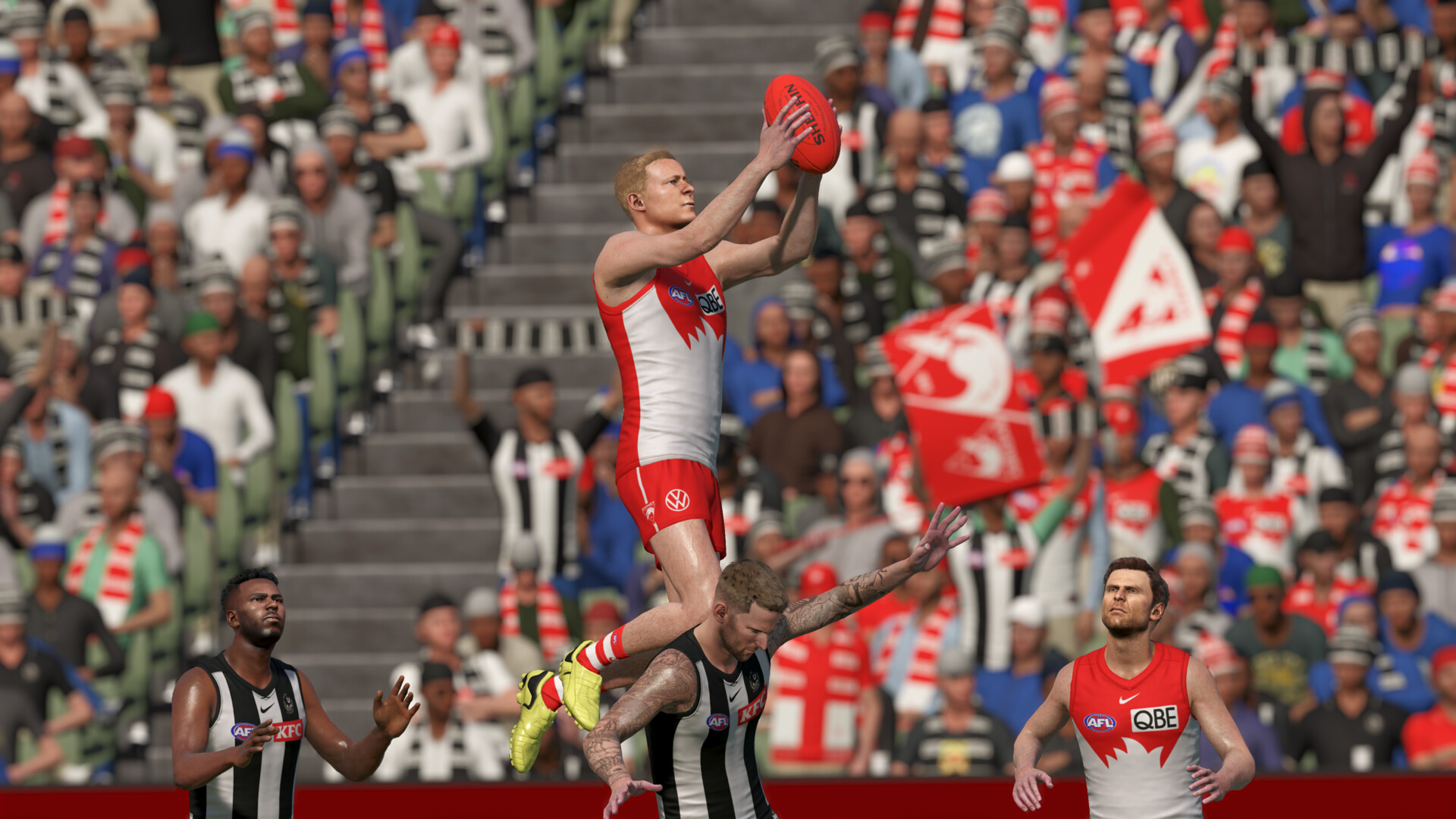
The problem with footy games
For over three decades, footy games have struggled to translate to the video game medium. Review scores have been mostly average at best, and sales have never been spectacular, with studios relying on the devotion of die-hard Australian fans south and west of the Barassi Line who treat the game of footy like a religion.
The real issue with making a footy game is two-fold. First of all, the market for them is always going to be niche. As much as a studio can bank on sales to the cross-section of gamers who are AFL diehards, that number is still pretty small. Sports titles like EA's FIFA/FC series and 2K's NBA series are polished and impressive thanks to massive production budgets that are only possible due to annual revenues in the billions.
The other side of the footy game problem is the sport's unstructured complexity. As I've already mentioned, AFL is extremely dynamic. The bounce of the oddly shaped ball adds chaos to an already chaotic game. Players use their hands and feet in equal measure and weave the ball between them during play. Tackles involve unseen jostling that requires a close-in perspective for the gamer, but the kicks can be huge - over 50 metres - requiring the ability for players to easily switch to a wide angled view. The rules of the game are complex, requiring an extensive tutorial mode, but even then, many of the rulings made by umpires in a match are judgment calls that might be difficult to coherently communicate to a player not already familiar with the rules of the game.
Some great examples footy chaos in action. Source: YouTube.
Delivering a high-fidelity footy experience on par with NBA 2k, FC24, or Madden might very well be a pipedream; the required budgets are too large and the potential revenue too small to justify it. Perhaps the way forward isn't about striving for the sort of high-fidelity experience one expects of EA Sports or 2K, but about looking backward, focusing on gameplay rather than fidelity.
The future
What comes next for the officially licensed AFL games is anyone's guess. Big Ant has committed to further updates for AFL 23, but who knows whether Wicked Witch Software is about to deliver the next game. In the meantime, indie developer Boot Mode Games is slowly chipping away at Footy Showdown, and until we see some innovative design changes to more effectively translate AFL to the video game medium, I think this might be the way forward.
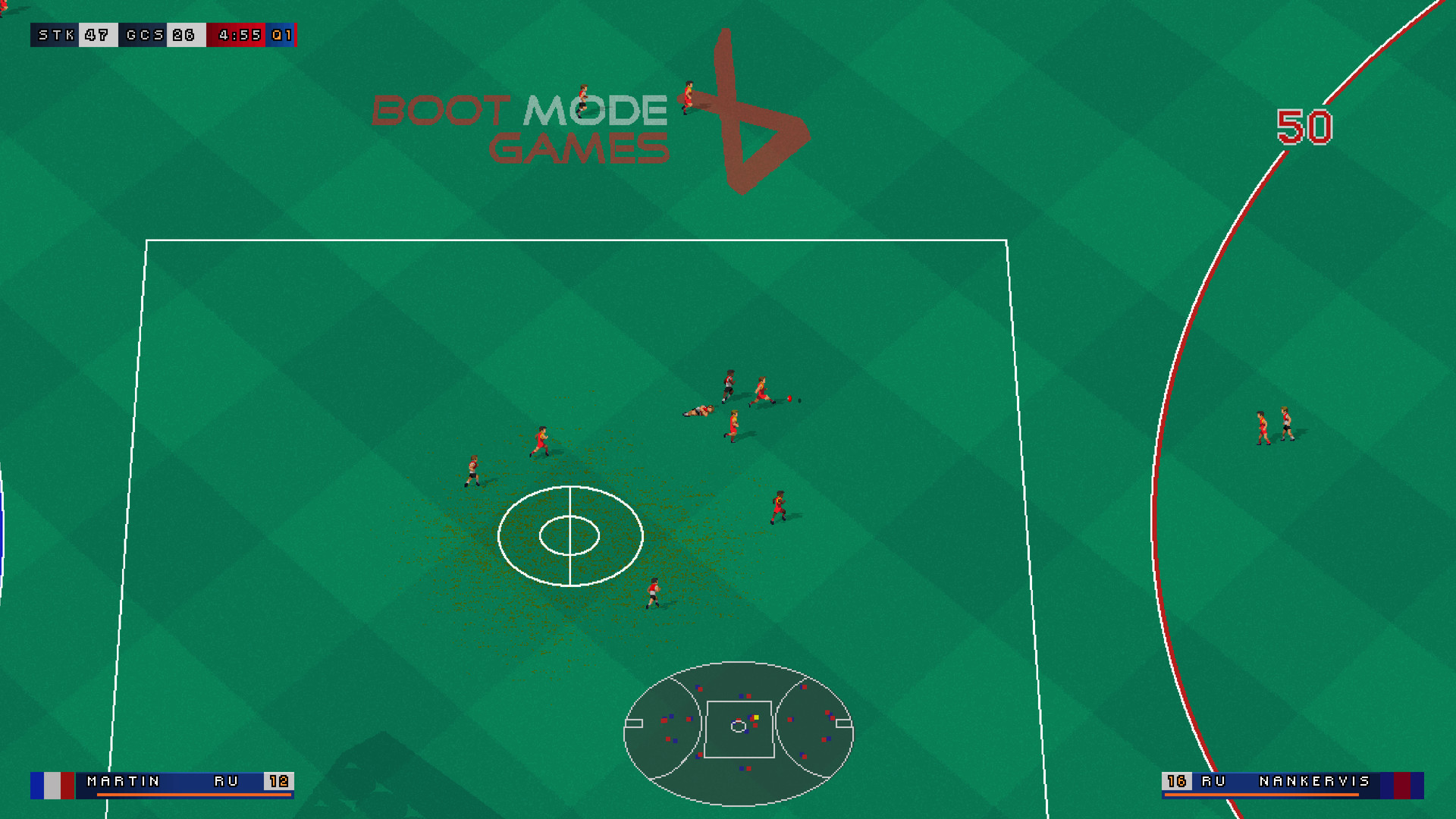
Footy Showdown harks back to the early days of footy games, most notably Aussie Rules Footy and AFL Finals Fever. The great thing about this approach is that you can ignore sinking development time into accurately modeling close-in contests, and just focus on making an arcade game that is fun to play. The other great thing about this is the knowledge that there's a market of die-hard AFL fans who have shown time and again that they are prepared to devour anything that looks remotely like their beloved game. For a small indie developer with low overheads, that's a pretty lucrative combination.
Full-time siren
When I think of footy games, I like to compare them to my beloved North Melbourne Football Club, the Kangaroos. They've got a long history, with moments of greatness, but plenty of pitfalls. They're not wealthy and successful - they're the underdogs. Most criticism is driven by the fact that everyone wants to see them succeed. They have a small but extremely loyal following. And most importantly, they have a promising future and they're here to stay.
So, I'll wrap this brief history of footy games with one final, obligatory statement:
CARN NORTH!!!
